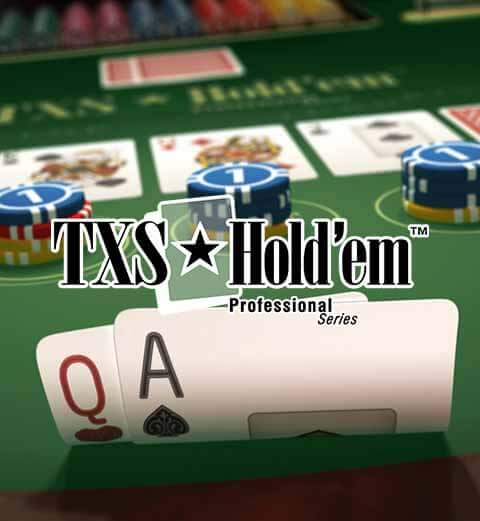How to Play Texas Holdem
Last Updated: July 1, 2024
If you've been eyeing Texas Hold’em but are unsure of its nuances or how to begin, you're in luck—our guide is specifically tailored for newcomers like you.
While Texas Hold’em is an easy game to grasp, the initial dive might appear daunting for poker novices—don't fret, by the end of this, you'll be well-prepared to jump in.
Let's break down the basics of playing Texas Hold’em poker, one step at a time.
The Best Online Poker Sites
Affiliate Disclosure: We at galactic-wins-ca.com aim to align you with the most fitting casino and sportsbook deals. Some links are affiliate-based, meaning any deposit via our links earns us a commission—with no extra expense for you.
- Well-known and established casino
- Promo with Bonus code: SPECIAL2000
- Ontario Licensed
Must be 18 or older. Exclusive to new players with a minimum deposit of $15. Accumulate 5 redemption points per C$1 to unlock bonus cash. Offer available across Canada except Ontario. T&C’s apply.
- $25 No deposit bonus
- Large selection of payment options
- A wide array of exciting bonuses and promotions awaits.
18+ only for newcomers. Minimum deposit of $20, with a 30x bonus wagering requirement. This offer is applicable only to Canadian residents, Ontario excluded. T&C’s apply.
- Special jackpots
- Exclusive slots tournaments
- 24/7 customer support
This offer is for new players aged 18+. A minimum deposit of $10 and a wagering requirement of 35x on bonuses. Specifically for Canadian residents, excluding Ontario. T&C's apply.
Table of Contents

About Texas Hold’em Poker
Texas Hold’em reigns supreme as the most favored poker variant globally, dominating prestigious tournaments like the World Series of Poker and European Poker Tour.
Given its overwhelming popularity, many players focus solely on mastering this game. It's the hallmark of major poker competitions.
The friendly expectation is that Texas Hold’em's rules are straightforward enough for beginners, making it easy to dive right into the action.
Still, the game isn't to be underestimated—it demands practice, a strategic mindset, skills, and a hint of luck.
The depth of strategic possibilities in Texas Hold'em can be bewildering, especially in more intense, competitive settings.
But let's focus on the fundamentals before aiming for the stars. As a beginner, embracing the core rules is your first task.
Grasping the rules is straightforward, yet crucial for mastering the game. Once you're equipped with the knowledge, hone your strategies before tackling real-money games.
The Rules in Texas Hold’em
We're about to delve into how the game unfolds in action.
On a fundamental level, your primary aim is to creatively blend your hole cards with the community cards to secure the best five-card hand possible.
The mechanics are akin to other poker variants, making familiarity with poker advantageous.
The principal variation lies in how hands develop differently in Texas Hold’em as opposed to games like 5 Card Draw.
In a standard Texas Hold’em scenario, players each receive two face-down 'hole cards' to start.
Subsequently, a series of betting rounds follow, with a total of five community cards eventually revealed face-up at the table's center.
These community cards are unveiled over three distinct stages:
1) The Flop: This initiates with the first three community cards.
2) The Turn: The fourth card adds a new layer to the mix.
3) The River: Completion occurs as the final community card appears.
Your task is to forge the strongest poker hand possible using your two private and the five pool cards.
Options include leveraging both your cards and three from the community, a combination of one private card and four community cards or using all five community cards.
You're essentially picking the best five-card hand among seven, crafted from private and communal options.
Your mission in Texas Hold'em is to outsmart your opponents with a superior hand or cunningly convince them you've got the upper hand.
Surviving the betting rounds to have all but one opponent fold results in an automatic pot win.
Thus, if bluffing is your forte, you can seize the pot even without the strongest hand in play.
In scenarios where multiple players remain post-final betting, the crown goes to the player with the premium hand.
Equipped with the game's layout and objectives, we take a deeper dive into strategic intricacies.
Key reminders on your poker journey include:
The Basic Features of Texas Hold’em
1) The game comprises several betting phases.
2) Your arsenal includes two private and five community cards.
3) Winning entails reaching the showdown with the best poker hand or being the last one standing.
Getting Started
You're now primed to explore the intricacies of varied betting rounds and learn about table roles:
The Button
The 'Button' is a positional indicator rotating leftwards with each new hand, designating the dealer position among players.
Play initiates from the dealer's left, proceeding clockwise, with the button signaling who's in the dealer's seat for that hand.
Notably, in professional settings like poker rooms or casinos, an official dealer is present, taking on the dealing role.
Among friends, this button simply rotates the dealer designation.
Betting Structure
Just left of the dealer, players contribute the 'small blind' and 'big blind' to kickstart the betting.
Progress ensues clockwise through various betting stages known as streets.
1. Preflop
2. Flop
3. Turn
4. River
Anticipate discussing these streets and their implications shortly.
The button signifies the acting dealer among active players.
Holding the button grants final say on post-flop streets.
The button's presence determines blind responsibilities and dealing sequence.
It designates which player actively takes on the dealer duties.
Players to the dealer's left, starting at small blind, receive the first card—dealt clockwise for all.
The Blinds
Action ignites as players receive their hole cards, leading into the betting festivities.
Before any action unfolds, small and big blinds take precedence, setting the stage.
Blinds are initiated bets, crucial for game momentum.
In the absence of blinds, dull, waiting games would prevail until optimum hands surface.
The blind system ensures consistent betting traction through enforced blinds.
Tournament dynamics see blinds escalate over time, while cash games offer stable blind structures through sessions.
As tournaments progress, stakes rise with advancing blinds to match chip accumulation.
Cash games, in contrast, remain consistent and predictable in blind usage.
Left of the dealer, the first player installs the small blind, followed by the second stepping in with the big blind.
Typically, the big blind is double the small blind amount, though variations exist among games and locations.
For example, in a $2/$4 game scenario, the small blind is $2, with the big blind as $4.
1: The Preflop – First Betting Round
Commencement of preflop betting follows once players receive hole cards.
The role of initial post-big-blind betting is dubbed 'under the gun,' introducing heightened pressure.
The player 'under the gun' holds three possible actions:
Call – to match the Big Blind bet
Raise – The act of increasing the existing bet within game constraints.
Fold – Opting out of the current round and waiting for the next.
Experience the thrill of playing Texas Hold'em Poker for real money in Canada in 2024.
Curious about Texas Hold'em but unsure where to start? Check out this beginner's guide to grasp the essentials of the game.
Want to dive into Texas Hold'em but unsure about the rules or how to kick things off? Our beginner's guide is just what you need to start your poker journey.
While the basic rules of the game are straightforward, the idea of starting can be a bit daunting if you’re new to poker. Fear not, by the end of this reading, you'll be equipped with all the foundational knowledge you need to begin.
Let's delve into the gameplay of Texas Hold'em...
Affiliate Disclosure: At galactic-wins-ca.com, we strive to connect players with the best casino and sportsbook deals suited to them. Hence, some site links on our platform are affiliate links. This implies that if you use our link to visit a site and then proceed to make a deposit, we might earn a commission with no extra cost to you.
18+. Exclusively for new players. Requires a minimum deposit of $15, with the need to earn 5 redemption points for each C$1 of bonus money before it can be released. Available only in Canada (excluding Ontario). Terms and conditions apply.
A range of enticing bonuses and promotions await.
18+. New players only. A minimum deposit of $20 is required, with a 30x bonus wagering requirement. Available for Canadian players (excluding Ontario). Terms and conditions apply.
2: The Flop – Second Betting Round
18+. Only for new players. A $10 minimum deposit is needed, with a bonus wagering requirement of 35x. Available for players in Canada (excluding Ontario). Terms and conditions apply.
Learn the ropes of playing Texas Hold'em Poker online.
Texas Hold'em stands as perhaps the world's most beloved poker game, headlining major tournaments like the World Series of Poker and the European Poker Tour with its no-limit variant.
Given its popularity, many players dedicate themselves solely to mastering Texas Hold'em, mirroring the focus of the game's prominent players.
The straightforward rules make it easy to grasp the basics and quickly get into the game.
However, never underestimate the game – skilled play requires practice, strategic thinking, talent, and a touch of luck.
As you advance to more competitive stages in Texas Hold'em, the various potential card combinations and in-game scenarios can add layers of complexity.
3: The Turn – Third Betting Round
But, let’s not rush ahead. For newcomers, it’s crucial to first familiarize yourself with the fundamental rules.
Though elementary, these rules are essential. Master them initially, refine your strategies, and then venture into playing with real stakes.
Firstly, let’s explore how a typical game unfolds…
The primary aim is straightforward: blend your personal cards with the community cards to craft the best five-card poker hand possible.
Texas Hold'em shares similarities with other poker variations, providing an advantage if you're already acquainted with poker rules.
Unlike games like 5 Card Draw, the way you construct your hand in Texas Hold'em is distinct.
Participants receive two face-down initial cards, termed 'hole cards.'
Throughout various betting phases, up to five community cards are eventually dealt face-up in the center of the table.
These five communal cards are revealed across three key stages:
You can opt to call, raise, check or fold.
1) The Flop: The first set of three community cards is unveiled.
5: The Showdown
2) The Turn: The fourth community card is introduced.
3) The River: The final community card enters play.
Your objective is to form the strongest poker hand using a mix of these community cards and your personal hole cards.
This can be done by combining your two private cards with three community cards, one hole card with four community cards, or using all five community cards.
Out of the seven cards available, you aim to select the top five, whether they come from your initial or community cards.
The Value of Hands in Texas Hold’em
Ultimately, Texas Hold'em boils down to outpacing your opponents with a superior hand or convincing them you have one.
If a betting round concludes with only one player remaining, they automatically claim the pot.
Yet, if multiple players remain post-betting, the one with the strongest hand seizes the pot.
Now that you get the game's structure and goals, let's dive deeper into the strategy.
Here are some critical aspects to note:
1) The game unfolds through numerous betting rounds.
2) Each player receives two private and five shared cards.
3) Unless solo at the showdown, the player with the premier hand wins the pot!
With a grasp of the basics, let's delve into the intricate betting rounds and table dynamics:
The ‘Button’ is a round disk placed before a player, shifting one seat left after each hand.
Gameplay starts to the dealer's left, progressing clockwise around the table. The button denotes the dealer.
In professional settings or casinos, a dedicated dealer handles the cards, leaving the button to merely indicate the acting dealer.
In home games, the button determines the dealer's role among friends.
You have two hole cards:
Betting progresses clockwise over several 'streets':
We'll know more about these rounds later.
The ‘Button’ is given to the player that acts as the dealer.
Getting a Strategy
The player with the button crafts the final action on subsequent post-flop rounds.
The button's position determines who's posting the blinds and where the deal starts.
It designates the acting dealer at the poker table.
The two players left of the dealer receive their cards first, with gameplay moving clockwise.
Action kicks off once all receive their hole cards, launching the betting.
Prior to starting each hand, two players post the small and big blinds. What are these?
Essentials to ensure betting occurs every round, preventing players from waiting for perfect hands.
The presence of blinds enriches gameplay, mandating forced bets
In big-stakes tournaments, blinds typically escalate to intensify the play. But, cash games maintain fixed blinds.
FAQs
As tournaments narrow, remaining chip stacks grow, elevating blinds as rounds progress.
+In contrast, cash games keep consistent bets.
Players left of the dealer post small and big blinds.
+The big blind stands at double the small blind, though game rules may vary.




